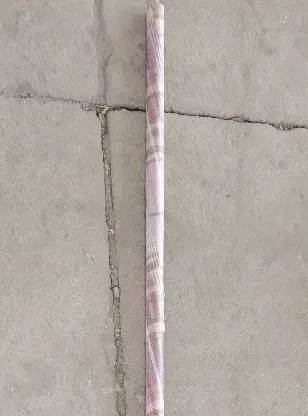loading...
- No. 9, Xingyuan South Street, Dongwaihuan Road, Zaoqiang County, Hengshui, Hebei, China
- admin@zjcomposites.com
- +86 15097380338
- Welcome to visit our website!
Innovative Applications of Fiberglass Reinforcement Bars in Construction and Infrastructure Projects
The Advantages of Fibreglass Reinforcement Bars
In the realm of construction and civil engineering, the choice of materials plays a crucial role in determining the durability and longevity of structures. One innovation that has gained immense popularity in recent years is the utilisation of fibreglass reinforcement bars (FRP bars). Unlike traditional steel reinforcements, fibreglass reinforcement bars offer several distinctive advantages that make them a preferred choice for many engineers and architects.
What are Fibreglass Reinforcement Bars?
Fibreglass reinforcement bars are composite materials made of glass fibers embedded in a polymer matrix. This combination provides FRP bars with remarkable properties that differentiate them from their steel counterparts. They are lighter, non-corrosive, non-magnetic, and have high tensile strength. These characteristics allow for enhanced performance in a variety of construction applications.
Corrosion Resistance
One of the most significant advantages of fibreglass reinforcement bars is their exceptional resistance to corrosion. Steel reinforcement bars (rebar) are prone to rust and degradation when exposed to moisture and salts, especially in coastal areas or structures exposed to de-icing chemicals. This corrosion leads to structural weakening, requiring costly repairs and maintenance. FRP bars, on the other hand, are inert to most chemicals and will not corrode, ensuring the longevity of the structure without the need for extensive upkeep.
Lightweight and High Strength
Fibreglass reinforcement bars are much lighter than steel bars, which simplifies handling and installation. The reduced weight can lead to lower transportation costs and ease of assembly on-site. Despite their lightweight nature, FRP bars exhibit an impressive high tensile strength, often exceeding that of low-grade steel. This unique combination of being both light and strong allows for innovative design possibilities and can lead to reduced structural weight, enhancing overall projectile efficiency.
Non-Conductive Properties
fibreglass reinforcement bar

Another notable feature of fibreglass reinforcement bars is their non-conductive nature. This property makes them ideal for use in environments that require non-magnetic materials, such as those in the aerospace, nuclear, and electrical sectors. Structures reinforced with FRP bars do not create electromagnetic interference, making them suitable for specific applications where electrical fields must be preserved.
Design Flexibility
The versatility of fibreglass reinforcement bars extends to their design applications. Engineers can easily customize FRP bars during production, adjusting parameters such as diameter, shape, and strength properties to meet the specific requirements of a project. This flexibility allows for creative and innovative structural designs that were previously challenging with traditional materials.
Sustainability
As global awareness about environmental issues rises, the sustainability of construction materials is garnering increasing attention. Fibreglass reinforcement bars contribute positively to sustainable construction practices. Their longevity reduces the frequency of repairs and replacements while their lightweight nature decreases energy consumption during transportation and installation. Additionally, as a composite material, FRP bars can be designed to include recycled components, further enhancing their eco-friendliness.
Application in Various Industries
Fibreglass reinforcement bars find applications in a variety of industries such as infrastructure, transportation, marine, and even in residential construction. Whether used in bridges, highways, parking structures, or pools, FRP bars provide enhanced structural integrity while mitigating the risk of corrosion-related failure. The growing demand for sustainable and durable construction solutions continues to drive interest in fibreglass reinforcement technology.
Conclusion
In conclusion, fibreglass reinforcement bars represent a significant advancement in construction material technology. Their resistance to corrosion, lightweight nature, non-conductive properties, and design flexibility make them an excellent substitute for traditional steel bars. As the construction industry continues to evolve, the integration of innovative materials like FRP bars will undoubtedly lead to more durable, sustainable, and efficient structures, ensuring safety and longevity in the built environment. Given the myriad advantages of fibreglass reinforcement bars, it is evident that they will play a pivotal role in shaping the future of construction.
-
GRP Structures: The Future of Lightweight, High-Performance EngineeringNewsJun.20,2025
-
FRP Water Tank: High-Performance Storage for Corrosive and Clean Water SystemsNewsJun.20,2025
-
FRP Square Tube: The New Industry Standard for Chemical and Structural ApplicationsNewsJun.20,2025
-
FRP Pultruded Profiles: The Ultimate Choice for Lightweight Structural StrengthNewsJun.20,2025
-
FRP Handrails: The Safer, Smarter, and Stronger Choice for Modern InfrastructureNewsJun.20,2025
-
FRP Grating: The Smart Solution for Durable, Lightweight Industrial FlooringNewsJun.20,2025
-
Why Choose a Galvanized Water Tank for Your Storage NeedsNewsMay.21,2025
